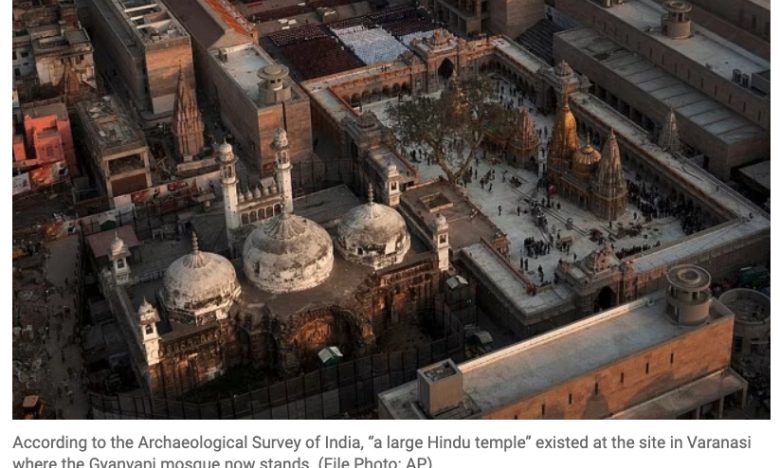NEW DELHI, INDIA, January 27, 2024 (Indian Express): The Archaeological Survey of India (ASI) has concluded that “there existed a large Hindu temple prior to the construction of the existing structure” at the Gyanvapi mosque site in Varanasi. The ASI has said it has relied on “scientific studies and observations” and that there is also ample textual evidence that supports its conclusion. A temple that stood adjacent to the existing Kashi Vishwanath temple is thought to have been razed on the orders of the Mughal Emperor Aurangzeb, and the Gyanvapi mosque erected on its ruins.
The most popular primary source cited for this is Saqi Mustaid Khan’s Maasir-i-Alamgiri, a Persian-language chronicle written shortly after Aurangzeb’s death in 1707. The ASI report refers to historian Jadunath Sarkar’s 1947 translation of the text. “His Majesty [Aurangzeb], eager to establish Islam, issued orders to the governors of all the provinces to demolish the schools and temples of the infidels, and with the utmost urgency put down the teaching and the public practice of the religion of these misbelievers,” says the Maasir-i-Alamgiri. The royal farmaan (decree) issued in Aurangzeb’s twelfth regnal year on April 9, 1669 led to the destruction of both the Vishwanath temple in Kashi and the Keshavdev temple in Mathura.
Read more of this history at source.
https://indianexpress.com/article/explained/explained-history/the-temple-that-aurangzeb-razed-evidence-from-history-9129714/
A daily summary of world news for Hindus and non-Hindus alike

